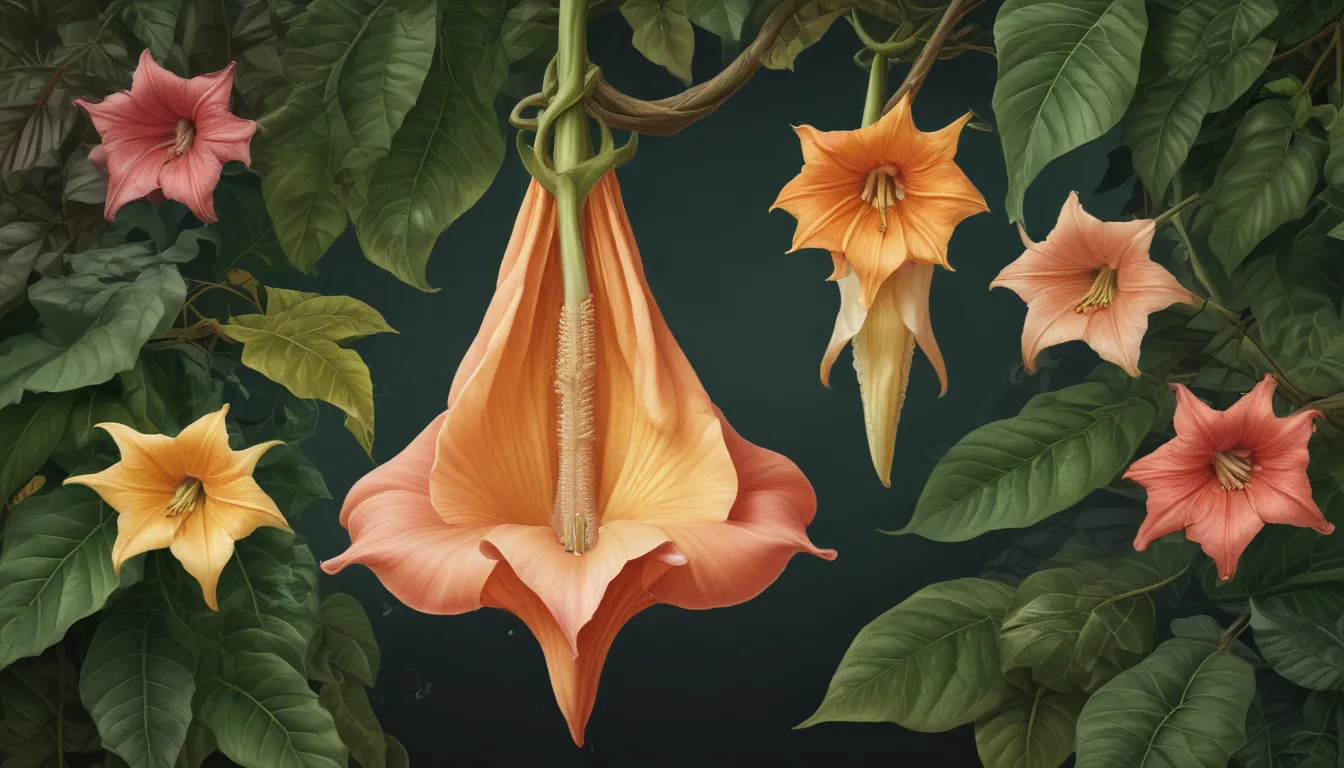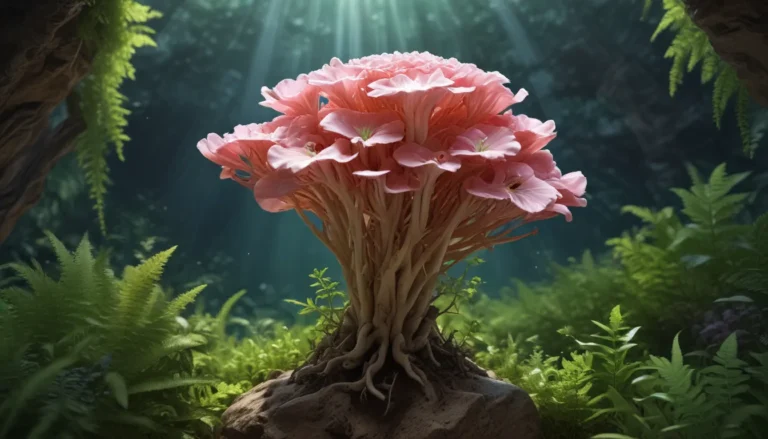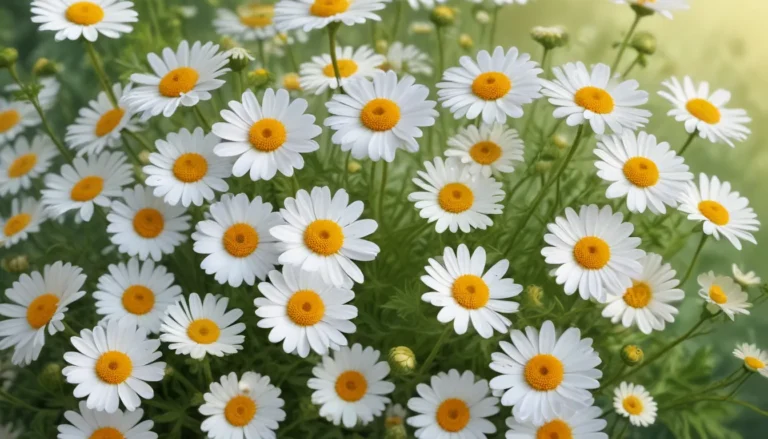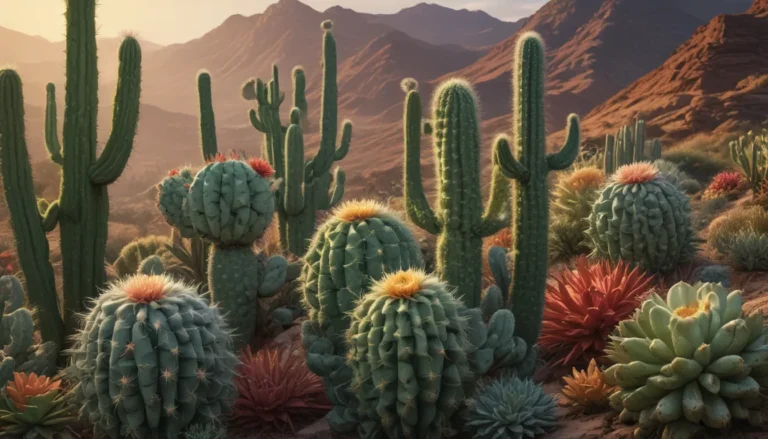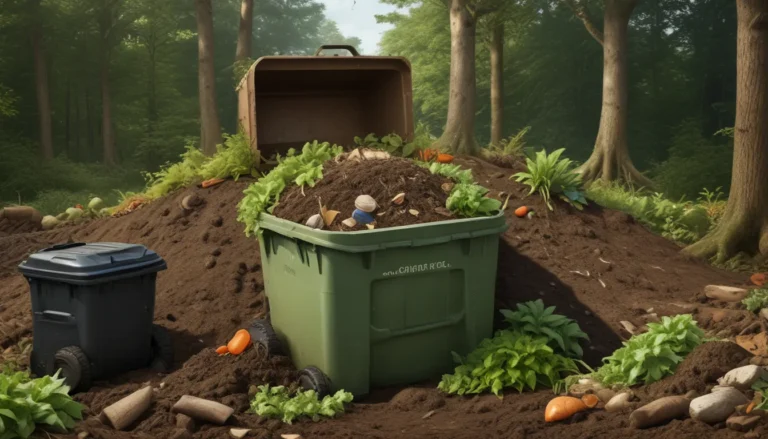The pictures we use in our articles might not show exactly what the words say. We choose these pictures to make you interested in reading more. The pictures work together with the words but don’t take their place. The words still tell you the important facts.
Welcome to the enchanting world of Brugmansia, also known as "angel's trumpet," a captivating plant native to South America that has captured the hearts of garden enthusiasts worldwide. With its stunning trumpet-shaped flowers and intoxicating fragrance, Brugmansia is a plant like no other, boasting unique charm and remarkable characteristics that make it a true gem in the botanical realm.
Understanding Brugmansia: A Closer Look at the Plant
Brugmansia’s Solanaceae Connection
Brugmansia belongs to the Solanaceae family, which includes popular plants like tomatoes, potatoes, and peppers. This diverse family showcases the unique characteristics of various species, highlighting Brugmansia's botanical significance.
The Diverse Species of Brugmansia
With approximately seven species to its name, Brugmansia offers a range of variations in flower color, scent, and growth habit. Species like Brugmansia arborea, Brugmansia sanguinea, and Brugmansia versicolor each bring their own unique flair to the plant kingdom.
The Native Origins of Brugmansia
Hailing from South America, particularly the Andes region, Brugmansia thrives in warm and humid climates found in countries like Bolivia, Ecuador, and Peru. Its natural habitat contributes to its stunning beauty and resilience as a plant.
Exploring the Beauty of Brugmansia: A Visual Feast
A Kaleidoscope of Colors
Brugmansia flowers dazzle with a rich palette of colors, ranging from white and yellow to pink, peach, and lavender. This vibrant spectrum adds to the visual appeal of the plant, making it a popular choice among gardeners seeking a touch of elegance.
The Sweet Symphony of Fragrance
One of the most alluring qualities of Brugmansia is its enchanting fragrance. The sweet scent emitted by its flowers, especially in the evenings, acts as a magnet for pollinators like moths and bees, enriching the garden experience.
Nurturing Brugmansia: Care Tips and Requirements
The Toxicity Conundrum
While undeniably beautiful, Brugmansia requires careful handling due to its highly toxic nature. Every part of the plant, from flowers to leaves and seeds, poses a risk if ingested, underscoring the importance of keeping it out of reach of children and pets.
Cultivating Brugmansia with Care
To thrive, Brugmansia demands a warm and sunny climate, with temperatures ideally ranging between 65 to 80 degrees Fahrenheit. In USDA hardiness zones 9 to 11, this plant flourishes, rewarding gardeners with its rapid growth and pendulous blooms.
Embracing the Magic of Brugmansia: Practical Considerations
Container Gardening Delight
Limited garden space is no obstacle for Brugmansia enthusiasts, as this plant thrives in containers. Balconies, patios, and even indoor settings can accommodate Brugmansia with proper care and attention to drainage needs.
A Haven for Pollinators
Brugmansia's fragrant flowers act as a beacon for pollinators such as bees, butterflies, and hummingbirds. By inviting these vital creatures into your garden through Brugmansia cultivation, you create a harmonious ecosystem of beauty and balance.
Reveling in the Beauty of Brugmansia: A Timeless Elegance
The Intermittent Bloom
Established Brugmansia plants have the potential to bloom throughout the year, given the right conditions of sunlight and water. This consistent flowering cycle ensures a perpetual display of the plant's captivating allure.
Grandeur in Size
Some Brugmansia flowers reach impressive lengths of 10 inches or more, captivating onlookers with their grandeur and showy appearance. These striking blooms serve as a focal point in any garden setting, commanding attention and admiration.
Enriching Your Brugmansia Experience: Practical Care Tips
The Watering Routine
Regular watering is essential to maintaining the health and vitality of Brugmansia. While the plant thrives in moist soil, overwatering should be avoided to prevent root rot and ensure optimal growth.
Propagation Possibilities
Expanding your Brugmansia collection is made easy through propagation by cuttings. By following simple steps like using rooting hormone and well-draining soil, you can nurture new plants and share the beauty of Brugmansia with others.
Embracing Brugmansia: A Plant for All Seasons
Longevity and Vigor
With proper care, Brugmansia can thrive and flourish for several years, providing enduring beauty and joy to those who cultivate it. Regular maintenance and pruning ensure the plant's longevity and vitality.
Bringing Brugmansia Indoors
For those in cooler climates, Brugmansia can find a home as a houseplant, basking in the sunlight and receiving the care it needs to thrive. Indoors or outdoors, Brugmansia exudes elegance and grace in any setting.
Unveiling the Magic of Brugmansia: A Journey of Discovery
Now equipped with a deeper understanding of Brugmansia and its intriguing characteristics, you are poised to appreciate this plant's beauty and significance in new ways. Whether adorning your garden or enhancing your indoor space, Brugmansia promises a touch of elegance and wonder for all who encounter it.
Delving Deeper: FAQs About Brugmansia
- Height Potential: Brugmansia can reach heights of 6 to 30 feet, varying based on the variety and growing conditions.
- Toxicity Reminder: All parts of Brugmansia are toxic, requiring cautious handling and placement out of reach of children and pets.
- Indoor Possibilities: Brugmansia can thrive indoors with proper sunlight exposure and care, offering beauty year-round.
- Watering Guidelines: Regular watering, usually once or twice a week, is recommended to maintain Brugmansia's health and vigor.
- Pruning Tips: Early spring is the best time for pruning Brugmansia, encouraging new growth and shape.
- Propagation Insights: Brugmansia can be propagated from cuttings, providing a simple method for expanding your plant collection.
- Pollinator Appeal: Brugmansia attracts nocturnal pollinators with its fragrant flowers, creating a vibrant garden ecosystem.
- Seed Starting: Growing Brugmansia from seeds is possible but may take longer than propagation from cuttings.
Continuation of the Journey: Exploring Angels Trumpet and Beyond
Brugmansia's allure and beauty are but the beginning of a captivating botanical adventure. Journey deeper into the world of Angels Trumpet and uncover additional astounding facts that shed light on its cultural significance and mesmerizing presence in various cultures worldwide.
A Commitment to Quality and Authenticity
Your quest for engaging and reliable botanical information is met with dedication and passion within our content. Each fact and insight shared is contributed by a vibrant community, ensuring a wealth of diverse perspectives and knowledge. Trust in our commitment to excellence as you continue to explore the wonders of the natural world with us.
In conclusion, the world of Brugmansia beckons with its timeless elegance and enchanting beauty, inviting you to delve deeper into its mysteries and wonders. As you cultivate your appreciation for this captivating plant, may its presence in your garden or home bring joy, inspiration, and a renewed connection to the natural world.
